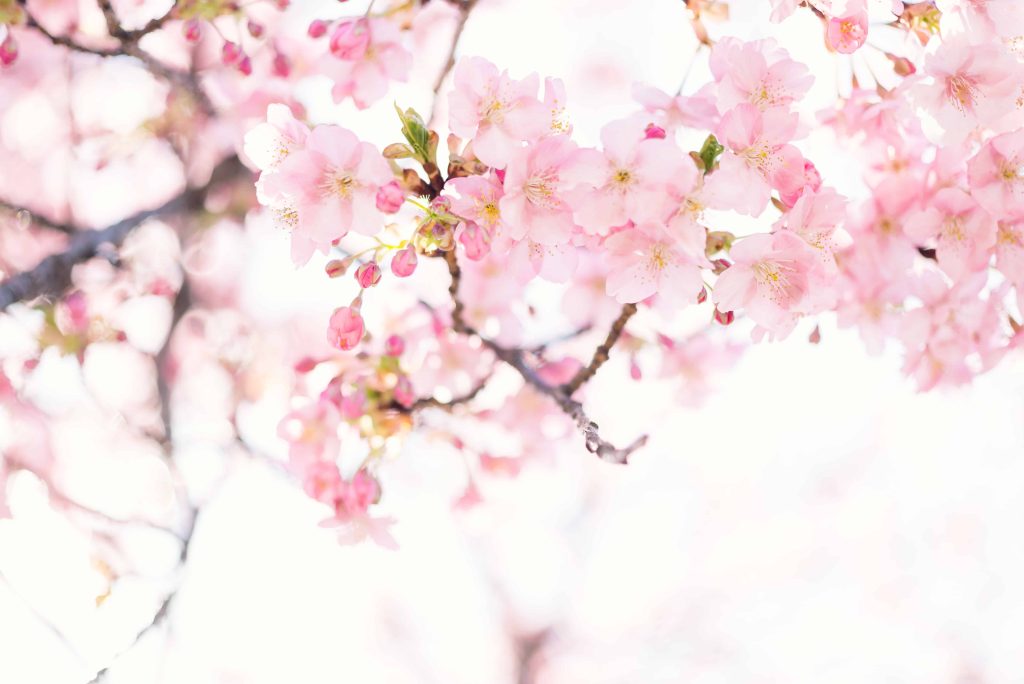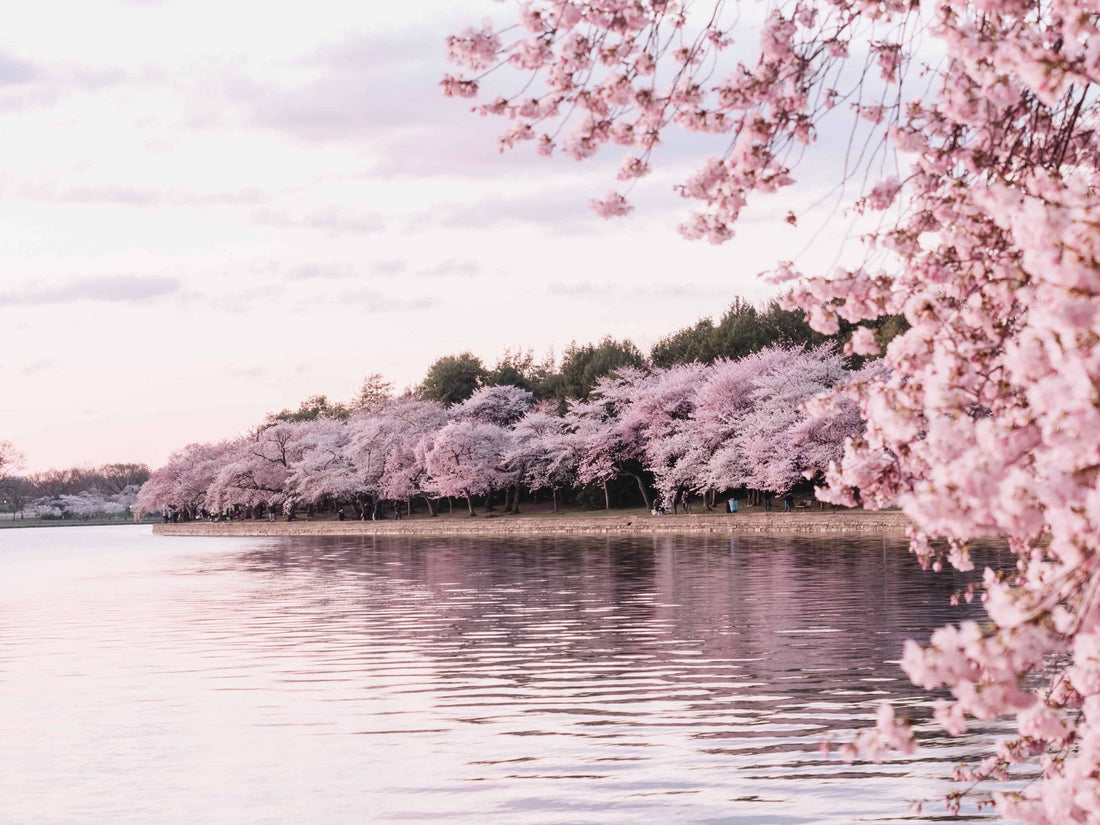Japan holds a great cultural resonance for cherry blossoms' meaning, woven throughout its history. Because of the significance of cherry blossoms in Japan, they are considered the country's unofficial national flower. Visitors travel far and wide to witness the blooming cherry blossoms, and we consider seeing cherry blossoms in Japan as one of the main reasons to visit Japan during the spring.
What Are Cherry Blossoms?
Known as sakura in Japanese, cherry blossoms are the flower of the genus Prunus trees. In the springtime, these small and dainty flowers bloom in hues of pink and white, creating clouds of beauty across Japan and the Northern Hemisphere, which typically have tolerable climates for cherry blossom trees to thrive.
Cherry blossoms are inextricably linked to their blooming, rather than their fruit, with their name even representing the flourishing of the flowers – after all, the Japanese cherry blossom meaning, saku from sakura, translates as 'to bloom'.

Cherry Blossom Meaning and Symbolism
The beauty of cherry blossoms isn't the only thing going for them – they also carry a deep philosophy in their petals. Part of the poignancy of cherry blossoms is their metaphorical meaning, rooted in a Buddhist approach to mortality.
Japanese culture recognises the short-lived life span of the flower as a symbol of the transience of human existence. When cherry blossoms bloom, they flourish into vibrant and potent flowers only to fall from their trees two weeks later. This is seen as a melancholic but beautiful metaphor for our fleeting lives.
Significance of Cherry Blossoms in Japan
There are many different ways cherry blossoms are significant in Japan as they feature prominently in Japanese history and culture. They can symbolise the fleeting nature of life, fresh starts and even people coming together in friendship.
History
The cherry blossom's spiritual meaning is entwined in Japanese culture and history. Vice Admiral Takijiro Onishi was a poet and war admiral in the 1900s, and his short poem captures the common evanescence of life and cherry blossoms:
'Today in flower,
Tomorrow scattered by the wind –
Such is our blossom life.
How can we think its fragrance lasts forever?'
Another meaning to the cherry blossoms emerged during World War II, representing Japanese pilots who painted the blossoms onto their warplanes before embarking on kamikaze missions. One kamikaze pilot penned this haiku shortly before he was sent on a mission:
If only we might fall
Like cherry blossoms in the spring
So pure and radiant!
However, the significance of cherry blossoms in Japan's history isn't only linked to death and war. In 1912, Japan gifted then-American President William Taft with 3,020 cherry trees in twelve varieties as an act of friendship between the two countries. Twenty were of the gyoiko variety, and these were planted on the grounds of the White House.
The cherry trees' meaning was clear, and they were woven into the fabric of American history. President Taft returned the gesture with a gift of flowering dogwood trees to Japan. A Cherry Blossom Festival began in 1935. Then, in 1952, after WWII, the National Park service shipped budwood from the original trees back to Japan to help restore the damaged grove in Adachi Ward where they had originated.
The trees continue to be propagated and replanted to ensure that the bond of friendship they symbolise continues to blossom.
Schools
While most Western schools begin the year in September, in Japan, the school year begins in April and coincides with peak cherry blossom season. In this context, in Japan, the significance of cherry blossoms reflects new beginnings and a visual reminder of hope and fresh starts. As a result of this, you will often see gorgeous scenes of sakura trees and cherry blossoms swirling through the air in Japanese school-life anime.

Hanami
The meaning of cherry blossoms is so revered in Japanese culture that the country engages in a tradition called hanami. Hana means 'flower', and mi means 'to view'.
Bearing the metaphorical meaning of cherry blossoms in mind, springtime is seen as a time to dwell on the brevity of life and practice gratitude and mindfulness by being present in the moment. This is where the custom of hanami comes in. During the blossoming season, families and friends gather for hanami, where they eat and drink under the blossoms. Some groups even barbecue or prepare hanami bento boxes. At twilight, couples enjoy yozakura, which translates as 'cherry blossoms at night' and is a romantic way to appreciate the blooms. This is a special time in Japanese culture.

You can find out more about the cherry blossom meaning in our previous blog post on flower symbolism in Japanese culture. We also offer a wide range of beautiful Japanese gifts, such as kimono and tableware, many of which are inspired by or printed with cherry blossoms. Looking to bring the delicate aroma of cherry blossoms into your home? Then please take a look at our cherry blossom incense.
